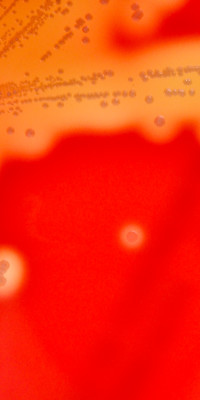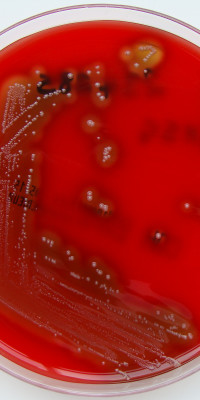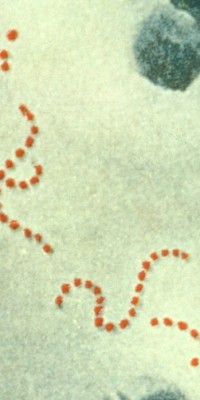Streptococcus pyogenes, also known as “Group A Strep”, is an infrequent, but usually pathogenic, part of the skin microbiota. Infection with S. pyogenes is the cause of many important human diseases, ranging from mild superficial skin infections to life-threatening systemic diseases including strep throat, toxic shock syndrome, impetigo, scarlet fever, impetigo, and necrotizing fasciitis.
Transmission:
S. pyogenes is spread person to person. It is most commonly spread by the direct contact of mucus from a sick, infected person to a healthy person. Formites are not involved with spreading the disease. People who harbor S. pyogenes but are not sick are less contagious. Foodborne and waterborne outbreaks have been documented, but vehicle transmission is not usual.
Symptoms:
The area of infection will dictate which symptoms are present. Infections typically begin in the throat or skin. The most striking sign is a strawberry-like rash. These can include:
- Pharyngitis (strep throat) – inflammation of throat with red and white patches, enlarged tonsils, headache, and fever
- Impetigo- yellowish, puss filled scabs formed from dried serum on the face, arms or legs
- Scarlet fever- prolonged sore throat and fever, bright red and dimpled tongue, a characteristic rash that starts on the chest, underarms, behind the ears, back and the rest of the body
- Streptococcal Toxic Shock Syndrome (STSS) – Abrupt onset of severe pain, often in the arm or leg. Dizziness, fever, flu-like symptoms, confusion, and possible large rash
- Necrotizing fasciitis- intense pain near the site of trauma (break in the skin). Soon leads to swollen tissue, the skin may turn purple and blister, and eventually, necrosis of skin will occur.




